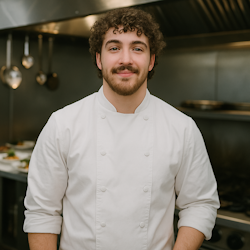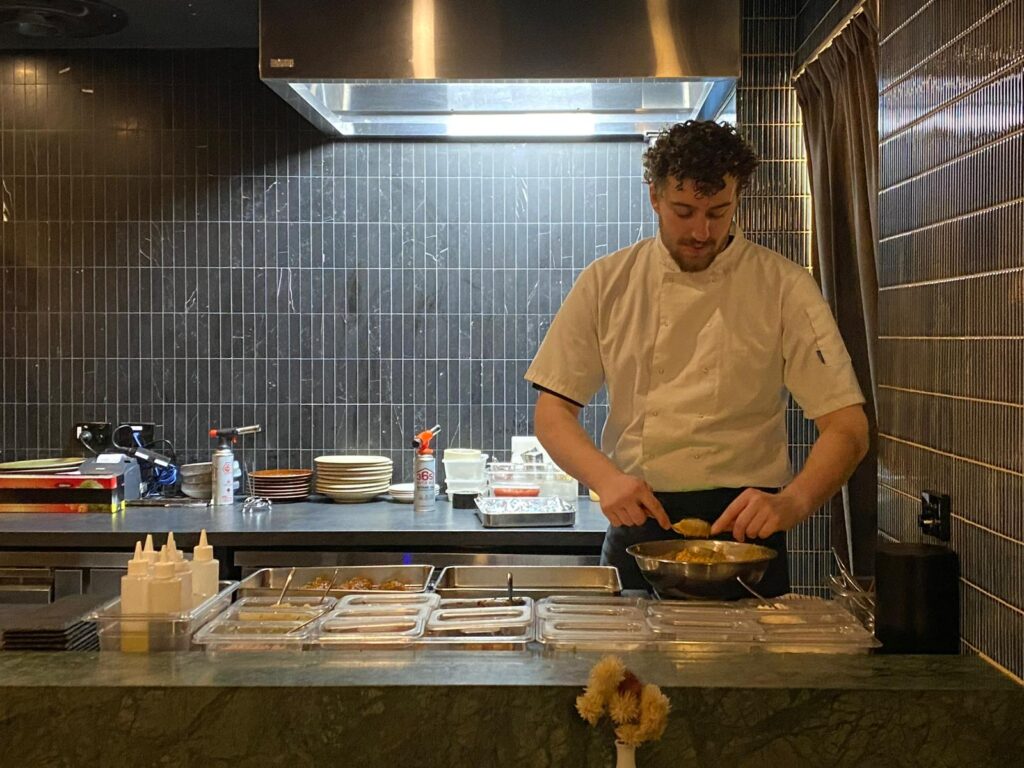Introducing Chef Brett Kerr – A Fusion Chef with a Global Perspective
- August 17, 2025
- Posted by: Sheryl Yong
- Categories: Chef, Innovation, International

Chef Brett Kerr

Some chefs are defined by their recipes; others by the stories they tell through food. Chef Brett Kerr is both. With a career that’s taken him from London’s acclaimed dining rooms to Melbourne’s thriving culinary scene, Brett has built a reputation for blending skill with creativity with tradition and innovation. He brings a unique perspective shaped by years in the kitchen, a deep respect for culinary heritage, and a curiosity that keeps him exploring new techniques and flavours.
Now, through his articles, Brett will share his insider’s view on the trends, challenges, and inspirations shaping kitchens today.
“Great food brings them in — but it is consistency, teamwork, and passion keeps them coming back.“
Chef Brett Kerr on what makes a restaurant successful:
Q: What first inspired you to become a chef?
From a young age I had a genuine passion for food and cooking. My father was a chef and his father before him a butcher and cafe owner, so I was fortunate enough to be surrounded by good food my whole childhood, and that definitely helped inspire me to follow the same path. Once I became a chef, I also began to value the feeling you get when you are able to create a good memory for someone due to something you created.
Q: What drew you into consultancy?
I found it rewarding to be able to share my knowledge of food to help other businesses and people, which is what drew me to consultancy. I also enjoyed the thought of a new challenge that would help me better understand the relation between food service and hospitality.
Q: How would you describe your cooking style today?
I specialise in Fusion cuisines, particularly combining traditional European with Japanese techniques. I’ve always been drawn to cuisines that are innovative and combine different styles and cultures of cooking. I think combining techniques, flavours, and ingredients from different cultures allows Chefs to tell a story, and also provides more possibilities for creativity when pairing a wider array of ingredients.
Q: Can you talk us through a recent project or dish you’re really proud of?
This year I’ve challenged myself to learn the traditional form of making sushi. I’ve been training under a professional sushi chef and have been surprised to learn the intricacies and attention to detail required to achieve what can appear to be a simple dish. I have particularly enjoyed learning how to make Nigiri, as although it is not composed of a lot of elements, every part of making a piece of the sushi is intentional and done with care. It’s been very rewarding to see my own progress, but also know that I am doing so in a way that pays respect to the culture it comes from.

Q: What trends are you seeing in bakery or pastry in particular?
Japanese everywhere. Particularly in Western cultures, Japanese cafes and flavours are popping up everywhere. People are riding the matcha train, and other distinct flavours such as yuzu, miso, and Japanese-style milk bread have been seen everywhere in desserts and pastries. There has been also an increase in popularity of high-end dessert bars, with realistic pastries in the style of Cedric Grolet becoming much more common. Lune and IKOI CAFE are both examples of high end cafes in Melbourne that have shot up in popularity with their elevated pastries and desserts.
Q: Have there been any career moments or client projects that really stand out to you?
It was very cool to meet and serve one of my favourite chefs and a pioneer in British gastronomy, Heston Blumenthal. He came to eat at my restaurant in London and I was lucky enough to serve his food and speak to him. That was definitely a career highlight.
Q: What can readers expect from your articles going forward?
Insights to global cooking trends, as well as highlighting trends and issues that arise in back-of-house.
Stay tuned for Chef Brett Kerr’s articles, where he’ll share fresh insights, industry trends, and a chef’s perspective from the heart of the kitchen.
By: Mikaela Meyer

